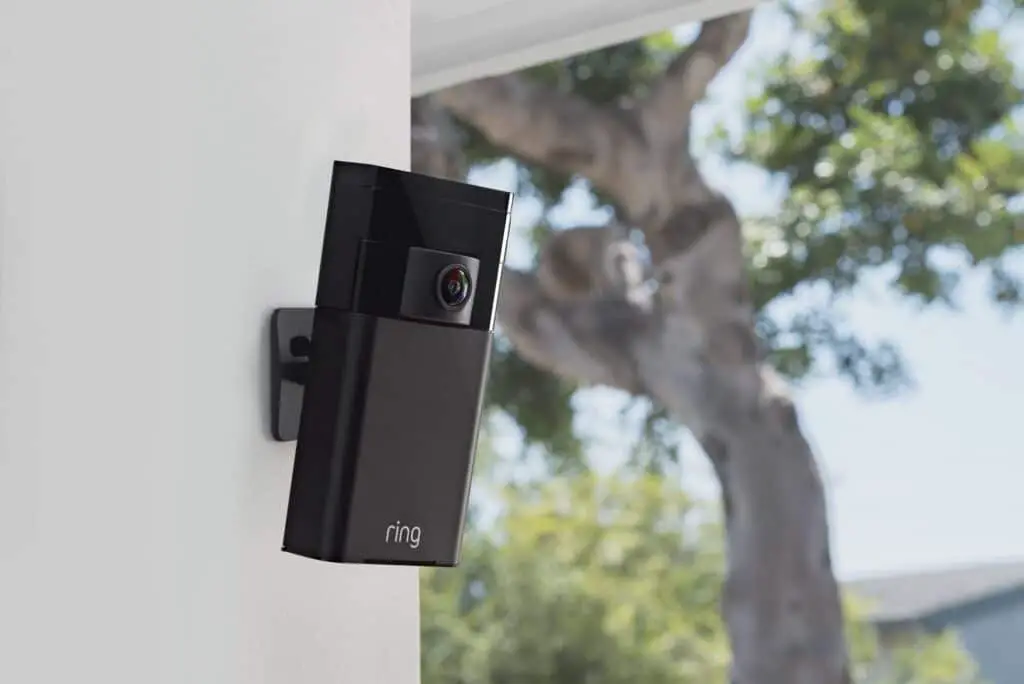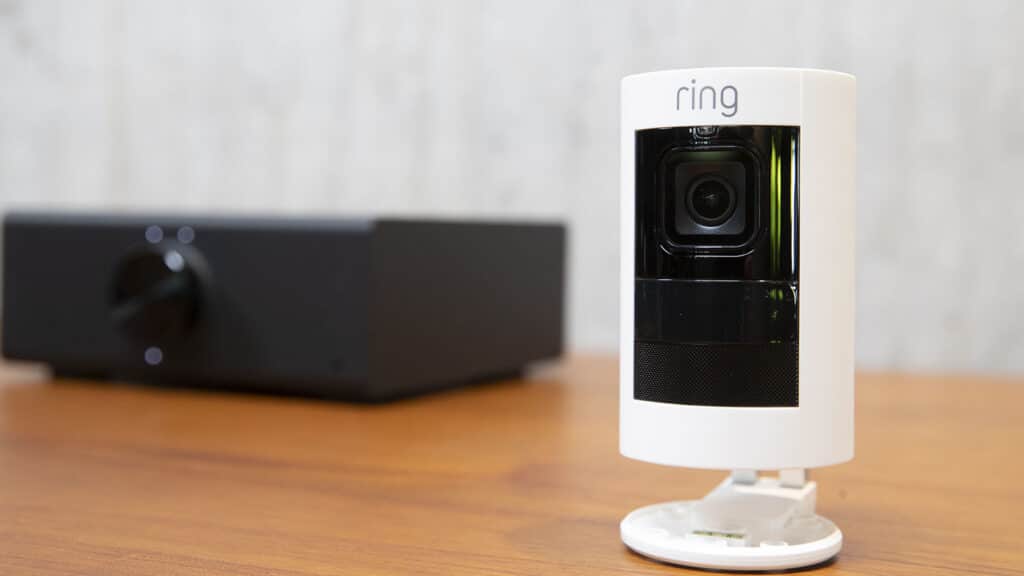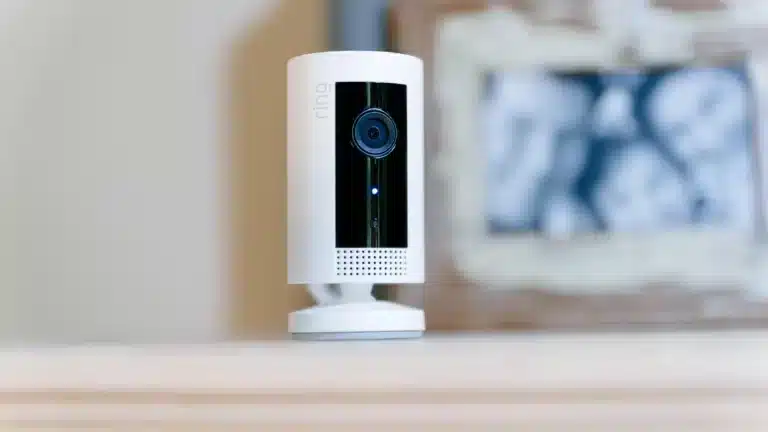Introduction
In recent years, home security has evolved dramatically with the advent of smart devices, and Ring cameras have emerged as a popular choice among homeowners seeking peace of mind and protection. These innovative surveillance cameras offer advanced features such as live video streaming, motion detection, and two-way communication. However, one common concern that leaves users perplexed is encountering a black and white feed instead of the expected vibrant color video.
The transition from a colorful video stream to monochromatic visuals can be both frustrating and unsettling for users relying on their Ring cameras for real-time surveillance. Understanding the reasons behind this apparent change in image quality is crucial in ensuring that these home security systems function as intended and offer reliable performance. The purpose of this research is to delve into the various factors that contribute to the black and white display on Ring cameras.
We will explore both technical and environmental aspects that may influence the camera’s image processing capabilities. Some potential reasons include low light conditions, infrared night vision mode, software settings, hardware issues, or connectivity problems. Additionally, we will discuss troubleshooting methods to help users resolve this issue promptly and regain the full functionality of their Ring cameras.

How do I get my Ring camera out of black and white?
Adjusting the Color Night Vision setting in the Ring app
- Open the Ring app.
- Tap the menu (☰).
- Tap Devices.
- Select the device you want to adjust.
- Tap Device Settings.
- Tap Video Settings.
- Toggle Color Night Vision on or off.
If your Ring camera is displaying a black and white video feed and you wish to restore it to full color mode, there are several steps you can take to address this issue:
Check Lighting Conditions
First, ensure that the area around your camera is well-lit. Ring cameras may automatically switch to black and white mode in low-light conditions or at night to enhance visibility. Improving the lighting in the camera’s vicinity can prompt it to revert to color mode during the day.
Disable Night Vision (Infrared)
If your Ring camera has a night vision feature that uses infrared technology, it will display black and white images in the dark. To get it out of black and white, go to your Ring app or the Ring website, navigate to the camera settings, and disable night vision. Keep in mind that doing so may result in reduced image clarity in low-light conditions.
Check Camera Settings
Ring app camera settings should not be manually adjusted to black and white. Accidental modifications or misconfigurations can lock the camera in monochrome. Put the camera in “Auto” or “Color” mode.
Update Firmware
Ensure that your Ring camera’s firmware is up-to-date. Manufacturers often release software updates that address various issues and improve camera performance. Keeping your camera’s firmware current might resolve any glitches causing the black and white display.
Reboot the Camera
A simple reboot of the camera can often resolve minor technical issues. Power cycle the camera by disconnecting it from its power source, waiting for a few seconds, and then reconnecting it.
Why is my Ring camera showing a black screen?
Your Ring camera video feed can go black for a variety of reasons. The most common reasons involve problems with apps, a broken Ring device, or issues with your home Wi-Fi network. Ring servers can also go down which could cause the video feed to stop.
Encountering a black screen on your Ring camera can be a frustrating experience, as it renders the surveillance system ineffective in providing real-time visual feedback. Several potential reasons may contribute to this issue:
Low Light Conditions
In environments with inadequate lighting, Ring cameras may switch to black screen mode as they struggle to capture clear images or videos. This behavior is often part of the camera’s automatic night vision feature, utilizing infrared sensors to record in the dark. To overcome this, consider installing additional lighting or enabling the camera’s night vision mode.
Camera Hardware Issues
Hardware malfunctions can cause a black screen. It may be due to a faulty lens, sensor, or other internal components. Inspect the camera for any visible damage or signs of malfunction and contact Ring support for assistance if necessary.
Firmware or Software Problems
Outdated firmware or software glitches can lead to a black screen issue. Ensure your Ring camera’s firmware is up-to-date and check for any recent software updates. If you recently updated the software and the problem emerged afterward, try rolling back to a previous version or contact Ring support for further guidance.
Power or Connectivity Problems
A loss of power or an unstable internet connection can interrupt the camera’s functionality, resulting in a black screen. Verify that the camera is receiving power and that it is properly connected to the network.
Camera Settings Misconfiguration
Accidental changes to camera settings might lead to a black screen. Review your Ring app or website settings to ensure that the camera’s features are correctly configured.
Are Ring cameras in color?
Ring says its adding a color nighttime video option to its smart home security cameras. The feature was recently rolled out to all wired cameras in its range, and it will soon be available on battery-powered cameras as well, the company said.
Yes, Ring cameras are typically capable of capturing and displaying video in color. The majority of Ring camera models are designed to provide users with clear and vibrant color footage during daylight and well-lit conditions. This feature allows homeowners to observe and monitor their surroundings in full color detail, offering a more comprehensive view of any potential security concerns.
However, it is essential to note that Ring cameras also incorporate other innovative functionalities, such as automatic night vision. During low-light conditions or at night, when there is not enough natural light available, the cameras may switch to black and white mode. This transition is used to improve image clarity in dim situations. Monochromatic video streams from infrared sensors provide excellent surveillance capabilities.
Users can adjust the camera settings to enable or disable the night vision feature, depending on their preferences and the specific requirements of their surveillance needs. By toggling the night vision mode, users can optimize their Ring cameras to deliver color footage during the day and switch to black and white at night, striking a balance between image quality and visibility in various lighting conditions.

Why is Ring camera white?
If your Video Doorbell Wired shows a solid white light it’s either in idle mode or recording.
The Ring camera’s color, specifically its white color, is a deliberate design choice made by the manufacturer, Ring (now owned by Amazon). Several factors contribute to the decision to make Ring cameras predominantly white:
Aesthetics and Versatility
White is a neutral color that blends well with various home exteriors and interiors. By opting for a white color scheme, Ring aims to create a camera that seamlessly fits into different architectural styles and home decors, making it a visually unobtrusive addition to any property.
Perception of Cleanliness and Modernity
White is often associated with cleanliness, purity, and modernity. A white camera can convey a sense of cleanliness, which may resonate with users who prioritize hygiene and maintenance.
Visibility and Deterrence
The white color makes the camera stand out and be easily noticeable, both to potential intruders and the homeowners themselves. This visibility can serve as a deterrent, as the presence of a visible security camera may discourage unauthorized individuals from approaching the property.
Customer Preference
Through market research and user feedback, Ring might have found that many customers preferred a white camera over other color options.
Branding and Recognition
Ring’s brand identity is associated with the white camera design. Consistency in appearance helps with brand recognition and reinforces the association with Ring’s products.
Heat Absorption
White surfaces tend to reflect sunlight rather than absorbing it, which can help prevent the camera from overheating in sunny environments, thereby contributing to the camera’s overall performance and longevity.
Why did my Ring change color?
Oxidation is a process caused simply by daily exposure to oxygen, which can eventually affect the colour of various precious metals over time. For example, oxidisation is what causes silver to turn black, or copper to turn blue.
If your Ring camera has changed color, there could be various reasons behind this occurrence. Understanding the factors contributing to the change will help you troubleshoot and address the issue effectively:
Camera Settings
Ring cameras offer users the flexibility to customize settings, including color preferences. It is possible that someone with access to the camera’s settings modified the color options, causing the camera to change its color display.
Firmware Update
Sometimes, a firmware update pushed by Ring may include changes to camera settings or functionalities. This update could have altered the camera’s default color settings, resulting in the apparent color change.
Environmental Lighting
The camera’s color display might seem different based on the lighting conditions in its surroundings. If there has been a significant change in the lighting, it can impact the camera’s perception of colors.
Night Vision Mode
Ring cameras employ infrared night vision technology to capture images in low-light or dark conditions. During night vision mode, the camera may switch to a black and white display, which can give the impression of a color change.
Camera Hardware Issues
In some instances, hardware malfunctions or defects can lead to abnormal behavior in the camera, including unexpected changes in color. Inspect the camera for any physical damage or signs of malfunction.
App or Connectivity Glitches
Technical issues with the Ring app or connectivity problems between the camera and your network might cause the camera to display colors differently or incorrectly.
Will my Ring camera always display in black and white during nighttime?
No, your Ring camera will not always display in black and white during nighttime. While Ring cameras have a night vision feature that allows them to capture images in low-light or dark conditions, this does not mean that they will continuously remain in black and white mode.
Ring cameras use infrared (IR) LEDs to illuminate the surrounding area in the absence of natural light. This enables the camera to see in the dark without the need for visible light sources. In night vision mode, the camera will switch to black and white, as it relies on IR illumination to capture clear images.
However, if there is sufficient ambient light or additional lighting in the camera’s field of view during nighttime, the camera may continue to display in color. For example, if there are streetlights, porch lights, or other external lights providing ample illumination, the camera will operate in color mode as long as there is enough light for the sensor to capture colors effectively.
Why is my Ring camera stuck in black and white mode even in daylight?
If your Ring camera is stuck in black and white mode even in daylight, several potential reasons could be causing this issue. To address the problem, consider the following troubleshooting steps:
Low Light Conditions
Double-check the camera’s location and surrounding lighting during the daytime. If the camera is installed in an area with insufficient natural light, it might interpret the environment as low-light conditions, prompting it to remain in black and white mode. Ensure there are no physical obstructions blocking light from reaching the camera’s lens.
Night Vision Setting
Ring app: check camera night vision settings. If night vision is mistakenly enabled, the camera will display in black and white during daytime. If you prefer daytime color video, disable night vision.
Firmware or Software Issues
Ensure that your Ring camera’s firmware is up-to-date. Software updates may address bugs or glitches that could cause the camera to stay in black and white mode. Check for any recent firmware updates and apply them if available.
Camera Hardware Problems
Hardware malfunctions or defects can also lead to the camera getting stuck in black and white mode. Inspect the camera for any visible damage or signs of malfunction, and if necessary, contact Ring support for further assistance or a possible replacement.
How can I fix my Ring camera if it’s displaying only in black and white mode?
If your Ring camera is displaying only in black and white mode and you wish to restore its color functionality, follow these troubleshooting steps to potentially resolve the issue:
Check Lighting Conditions
Ensure that the area around your camera is well-lit. Ring cameras may automatically switch to black and white mode in low-light conditions or at night to enhance visibility. Improving the lighting in the camera’s vicinity can prompt it to revert to color mode during the day.
Disable Night Vision
If your Ring camera has a night vision feature that uses infrared technology, it will display black and white images in the dark. To get it out of black and white mode, go to your Ring app or the Ring website, navigate to the camera settings, and disable night vision. Keep in mind that doing so may result in reduced image clarity in low-light conditions.
Check Camera Settings
Ring app camera settings should not be manually adjusted to black and white. Accidental modifications or misconfigurations can lock the camera in monochrome. Put the camera in “Auto” or “Color” mode.
Update Firmware
Ensure that your Ring camera’s firmware is up-to-date. Manufacturers often release software updates that address various issues and improve camera performance. Keeping your camera’s firmware current might resolve any glitches causing the black and white display.
Reboot the Camera
A simple reboot of the camera can often resolve minor technical issues. Power cycle the camera by disconnecting it from its power source, waiting for a few seconds, and then reconnecting it.
Check Connectivity
Verify that your Ring camera has a stable internet connection. Connectivity problems may affect the camera’s ability to display color feeds in real-time.

Conclusion
Black and white displays on Ring cameras have many causes. We found several causes of this monochromatic phenomenon. The camera automatically switches to black and white mode in low light to improve visibility and image clarity during nighttime surveillance. Infrared night vision technology lets the camera take clear, black-and-white photos in the dark.
We also found software settings and hardware issues that could explain the camera’s unexpected image quality change. Adjusting camera settings, updating firmware, or performing maintenance may fix these difficulties and restore full color functionality. Connectivity issues and network disturbances can also prevent the camera from displaying color feeds in real time, resulting in black and white output.
While encountering a black and white Ring camera feed can be disconcerting, it is essential for users to understand that this functionality is intentional and designed to optimize the camera’s performance under various conditions. By familiarizing themselves with the camera’s features and settings, users can ensure they make the most of their home security system.

